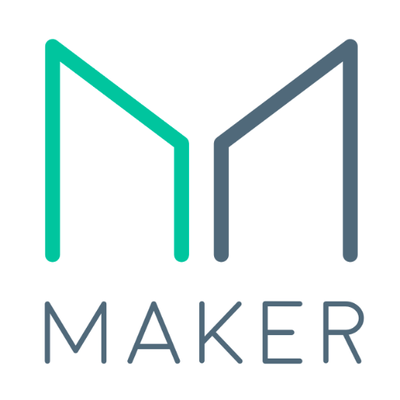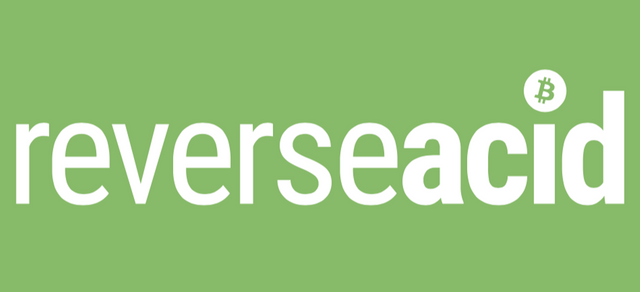The Stablecoin Ecosystem and It’s Importance to Digital Payments
Introduction
Off late every crypto enthusiast has probably seen the word 'stablecoin' used a lot when talking about cryptocurrency markets. In basic terms, it is just a coin that has a constant price, pegged to some sort of standard, be that the US Dollar, Euro, Pound, or a measure of inflation (CPI or WPI). The need for stablecoins grew from the massive concern for Bitcoin hyperinflation. While Bitcoin aims to be global money, it just isn’t possible with its price changing more than 2-5% on a minimum each day. In a world where Bitcoin is used widely for transactions, the inflation will essentially import Bitcoin's volatility into our daily lives. Imagine paying for eggs with Bitcoin. One day your eggs will be 500 satoshis and the next it could 600 satoshis. Prices fluctuating so much on a daily basis is the main rationale for economists saying its promise is more than its real value.

Source: HackerNoon
Digital currency will definitely be the future of money, whether it’s decentralised cryptocurrency or fiat issued in the form of a cryptographically secured manner. The drawbacks of paper are plentiful and range from environmental concerns from so much paper to the increasing likelihood of counterfeiting. In light of these realisations, people will see the need for digital money to encompass a larger portion of our economy. Fiat currency is centralised and is susceptible to manipulation by central banks. Eventually, people will indeed adopt decentralised currencies in order to bypass this. This is where stablecoins play a key role.
The Role of Stablecoins
Bitcoin, as previously mentioned, is much too volatile to be a means of storing value (at this point). With incredibly low supply, capped at a 21 million, it can never truly be stable like a fiat currency. The solution to this are coins whose supply can be expanded and contracted as per prevailing economic conditions. This is where stablecoins enter the ecosystem. By being pegged to a certain indicator or value, they help prevent large fluctuations and more importantly, act as a hedge to the downside risk. They can be used to pay for day to day expenses and help maintain general stability in a portfolio. Currently, there are a number of stablecoins but not many serve their true purpose. In August, a well known centralised stable 'Tether', which was pegged to the price of a US Dollar fell 15% to 85¢. This was caused by an influx of people selling their Tether for Bitcoin. Since then, Tether has been constantly plagued by rumours and has a perpetual shadow of doubt cast upon it. Tether tokens are probably the most controversial topic in the entire cryptocurrency universe. From their promise of audits and failure to deliver, to their abrupt halting of withdrawal for USD, they have rightly been dubbed a bane to the market.
Existing Projects

Source: TrueUSD
There are many more promising stablecoins in existence and few more solid projects in the works. Of all the currently existing and usable stables, TrueUSD has gained the most adoption (after Tether). Despite this, MakerDAO's stablecoin 'DAI', which is also tied to the USD, is the most viable in the market. The only major drawback of DAI is the necessity to own ETH tokens. While DAI can be obtained on exchanges, DAI comes into existence by using ETH as collateral. This is done through a process called CDP or Collateralised Debt Program. This is done through immutable smart contracts on the MakerDAO Blockchain. A person with ETH can open a contract by guaranteeing their ETH or keeping it in lockup in a smart contract. By doing this, they no longer have access to that ETH but they are in return allowed to borrow a certain amount of DAI. For example, if ETH is trading at $1000, by locking up 1 ETH, you can borrow 660 DAI which is the equivalent of $660. This gives the borrower the ability to obtain liquid and stable money in return for taking their ETH. This works best in an environment where the price of ETH is rising and isn’t ideal when the price of ETH is falling as the contract has a liquidation at 150%. In other words, when the value of your DAI borrowed closes in on the value of your locked up ETH, you either have to lock up more ETH or your contracts gets liquidated. Liquidation here means the network takes control of your ETH and you keep your DAI. When you look at the contract listing, a lot of position have been liquidated during this bear market. The idea is to have money to pay your bills but not have to sell your ETH to do so. This works to the disadvantage of borrowers during bear markets as they could have liquidated ETH for fiat or a stablecoin on an exchange instead. This system works well only for people who need liquidity but don’t want to dilute their ETH holdings. But this protocol also helps keep out malicious players. This is because it makes more sense for them to just sell their ETH. For a malicious player to use a smart contract in a negative way, they would have to erode their own profit margin, so their must be sole intention of attacking the MakerDAO ecosystem.

Source: Medium
Many projects from BitShares to Seigniorage Shares have tried to implement successful stablecoin projects but were unable to make a firm mark for a variety of reasons. Gemini USD stable also makes its way onto this. It is the first and as of now only stablecoin that is operating with the permission of the New York State Department of Financial Services (NYDFS). But as Andreas Antonopolous pointed out in the 'Let's talk Bitcoin' podcast, Gemini USD incorporates counterparty risk as it can be 'modified'. This makes it not worth the risk for and investor or as a medium of transfer.
Exciting Prospect
One of the most exciting prospects for Stablecoins comes in the form of the Basis Protocol. This is a project founded by alumnus from D.E. Shaw and Google. They are the first stablecoin protocol I’ve encountered that offer sufficient information on how they function and also got the concept of decentralised central banking correct. Basis aims to implement an algorithm based central banking process that expands and contracts supply based on existing market conditions. It incorporates treasury management without the flaws of human intervention. Political biases and a menial sense of right and wrong are eliminated from the process. This makes it all the more simple and notches above current central bank efficiency. Though like traditional central banks, it isn’t burdened with the task of an interest rate as there is no direct lending.
The way Basis controls demand and supply boils down to the ecosystem. There are three tokens on the platform; Basis tokens (the stablecoin), Basis Shares, and bond tokens. Each of these serve their own unique purpose in the ecosystem. The stablecoin is the main unit of account through which transactions are made and investments are hedged. The shares are a limited supply token that grants dividends in the form of the Basis token. When the supply has to be contracted, the tokens redeemed from the supply are given as dividend to shares and as repayment to the bonds in existence. When supply has to be expanded, they issue bonds in order to raise the money to create Basis tokens. Quite a simple approach and it’s essentially the core of the current banking system. The white paper gives an in depth explanation of how the algorithm and system work but from my analysis of Basis their motive is to create an effective and simple recreation of the current banking system, where decisions are taken based on criteria truly warranting it. The emphasis on 'simple' cannot be stressed enough. Their ideology revolves around removing the needless complexities the current system creates. It’s an incredibly refreshing system when compared to Central Bankers you see today who have too much to account for with high stakes and burden. Basic is exciting and it will be interesting to see how it evolves.
Conclusion
Stablecoins have great potential. The promise of a stable means of holding and payment while also having the speed and censorship resistant properties of cryptocurrencies. Digital payments will most certainly encompass a majority of world payments within the next decade. Having the means to use a cryptographically secured monetary system with which you can hedge your cryptocurrency investments and send money seamlessly across the world will be an undoubtable driving force. I encourage every person involved with the space that sees the potential of cryptocurrency as a monetary system to do their own research on stablecoins. Their impact on the future of payments and investments will prove to change the industry for the better. As of now, none of the projects in existence that are used are truly a stable means of holding and transferring wealth. Once the mechanisms are figured out and developments are made in the same, stablecoins will take over the cryptocurrency landscape.
- AB
---
ReverseAcid Monthly Recap
---
Crypto Analysis Series
- Part 1 - Basic Attention Token and How It's Revolutionizing the Internet
- Part 2 - Golem Network Token as a Potential Giant Killer
- Part 3 - Augur and the Future of Decentralized Predictions Markets
- Part 4 - Dogecoin - Such Meme, Much Value
- Part 5 - Zilliqa
---
Previous posts:
- Looking Back at the Ethereum Hard Fork Timeline - A Precursor to Constantinople
- Gold Making A Rebound
- Blockchain Patents Race
- XRP-USD Chart Breakdown: Daily Timeframe
- Governmental Incentives for Implementing Distributed Databases
- Current Scenario of the Global Stock Market: A Detailed View Into Major World Indices
- Giving in to Your Fear: Does the Current Market Warrant this Magnitude of FUD?
- DLT, Blockchain, and Cryptocurrencies: What it all Means for FinTech and More
- Confidence Crisis: HODL on to Your Horses
- Bitcoin Technicals: In Depth Breakdown of the Current Move
---
About Reverse Acid

---
Be a part of our Discord community to engage in related topic conversation.

---
Follow our Instagram and Twitter page for timely market updates


Stablecoins is a hot topic lately, it is good to use them to protect your wealth on the bearish trend.
Posted using Partiko Android
It's a big implication for traders. Ability to hedge the volatility without having to touch fiat
Posted using Partiko Android
You can see them on the top 25 in the crypto market cap with a really stable value that is always around 1$!
Great article tho! Glad that you've mentioned maker and as a trader, before I set an investment in other cryptos, I always make sure that those projects must meet my criteria and so same as the criteria KuCoin have and glad that Maker made it to kucoin plus. It gives me a strong confidence to hold it for a long-term basis. If you're unsure as well with what or where to invest then you must check out this blog of kucoin which enumerated their most traded tokens. https://blog.kucoin.com/an-insight-into-kucoin-plus-sk-st